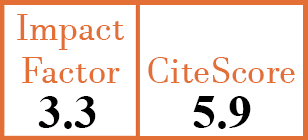Full Papers
From pain catastrophising to multidimensional psychological distress: unravelling the complexity of difficult-to-treat psoriatic arthritis
D. Currado1, F. Saracino2, F. De Vincenzo3, F. Trunfio4, A. Marino5, L. Kun6, E. Corberi7, L. Lamberti8, L. Frascà9, O. Berardicurti10, M. Gatti11, M. Vomero12, R. Giacomelli13, L. Navarini14
- Rheumatology and Clinical Immunology, Department of Medicine, University of Rome Campus Biomedico, School of Medicine, Rome; and Clinical and Research Section of Rheumatology and Clinical Immunology Fondazione Policlinico Campus Biomedico, Rome, Italy.
- Rheumatology and Clinical Immunology, Department of Medicine, University of Rome Campus Biomedico, School of Medicine, Rome, Italy.
- Department of Human Sciences, European University of Rome, Italy. francesco.devincenzo@unier.it
- Rheumatology and Clinical Immunology, Department of Medicine, University of Rome Campus Biomedico, School of Medicine, Rome, Italy.
- Rheumatology and Clinical Immunology, Department of Medicine, University of Rome Campus Biomedico, School of Medicine, Rome, Italy.
- Rheumatology and Clinical Immunology, Department of Medicine, University of Rome Campus Biomedico, School of Medicine, Rome, Italy.
- Rheumatology and Clinical Immunology, Department of Medicine, University of Rome Campus Biomedico, School of Medicine, Rome, Italy.
- Rheumatology and Clinical Immunology, Department of Medicine, University of Rome Campus Biomedico, School of Medicine, Rome, Italy.
- Rheumatology and Clinical Immunology, Department of Medicine, University of Rome Campus Biomedico, School of Medicine, Rome, Italy.
- Rheumatology and Clinical Immunology, Department of Medicine, University of Rome Campus Biomedico, School of Medicine, Rome; and Clinical and Research Section of Rheumatology and Clinical Immunology Fondazione Policlinico Campus Biomedico, Rome, Italy.
- Rheumatology and Clinical Immunology, Department of Medicine, University of Rome Campus Biomedico, School of Medicine, Rome, Italy.
- Rheumatology and Clinical Immunology, Department of Medicine, University of Rome Campus Biomedico, School of Medicine, Rome; and Clinical and Research Section of Rheumatology and Clinical Immunology Fondazione Policlinico Campus Biomedico, Rome, Italy.
- Rheumatology and Clinical Immunology, Department of Medicine, University of Rome Campus Biomedico, School of Medicine, Rome; and Clinical and Research Section of Rheumatology and Clinical Immunology Fondazione Policlinico Campus Biomedico, Rome, Italy.
- Rheumatology and Clinical Immunology, Department of Medicine, University of Rome Campus Biomedico, School of Medicine, Rome; and Clinical and Research Section of Rheumatology and Clinical Immunology Fondazione Policlinico Campus Biomedico, Rome, Italy.
CER18638
2025 Vol.43, N°11
PI 1871, PF 1878
Full Papers
Free to view
(click on article PDF icon to read the article)
PMID: 40470553 [PubMed]
Received: 18/02/2025
Accepted : 24/04/2025
In Press: 31/05/2025
Published: 11/11/2025
Abstract
OBJECTIVES:
Pain catastrophising (PC), a maladaptive cognitive response to pain, has been implicated in poor outcomes in inflammatory arthritis, but its relationship with psoriatic arthritis difficult-to-treat (D2T) remains underexplored. This study aimed to investigate how the D2T phenotype impacts pain catastrophising (PC) and its domains (helplessness, rumination, magnification), along with other psychosocial and functional dimensions in PsA patients.
METHODS:
A cross-sectional study was conducted in a cohort of 182 PsA patients. Clinical and psychosocial data were collected, including Disease Activity for Psoriatic Arthritis (DAPSA), Minimal Disease Activity (MDA), Pain Catastrophising Scale (PCS), HADS anxiety and HADS depression. Univariable and multivariable regressions were used to evaluate psychometric variables associated with D2T.
RESULTS:
Univariable analysis showed a significant association between high PCS scores and D2T status. Multivariable models, adjusted for age, sex, disease duration, BMI, fibromyalgia, and disease activity, confirmed this relationship (b=7.637, 95% CI 3.261–12.014, p=0.001), specifically with PCS’ dimensions helplessness and rumination, but not magnification. Additionally, D2T predicted higher HADS anxiety scores, while its association with HADS depression was not statistically significant.
CONCLUSIONS:
Our results indicate that D2T status remains a significant predictor of PC, even when controlling for relevant clinical characteristics, including fibromyalgia and disease activity, highlighting the intricate relationship between D2T PsA and psychological dimensions, which may exacerbate disease burden and hinder treatment targets.



